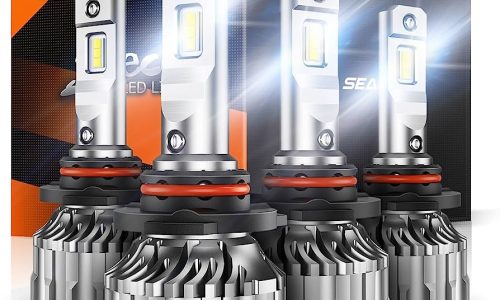
Although the transfer case is one of the most crucial components of a 4×4 vehicle, it often goes unnoticed until a problem arises. It is responsible for providing the four-wheel drive capability that defines a 4×4. The transfer case is the most significant part of a 4×4 vehicle that distinguishes it from the rest.
The transfer case has gone through significant evolution with time. But it doesn’t mean all modern transfer cases can beat the yesteryears. If you want to learn more about the np263hd transfer case, continue reading.
Types of Transfer Case
Full-time Transfer Case
These transfer cases usually have limited-slip or open differentials to prevent the drivetrain from binding and to regulate power distribution. Although full-time systems have become more advanced and reliable over time, they are less efficient due to the additional components that must be turned and worn.
A transfer case differential lock button is often included to achieve an even power split required for off-road driving, and the system may need to be shifted into a low range. Full-time transfer cases are typically paired with high-horsepower vehicles, so strength is rarely an issue. However, converting to a more traditional part-time case can be costly.
Part-time Transfer Case
Trucks typically use part-time transfer cases, which can send power to the rear wheels only. This results in fewer components wearing out and improved strength and fuel efficiency. Engaging a four-wheel drive (represented as 4-Hi in most cases) activates the front driveline, distributing power equally between axles.
Part-time transfer cases are mostly two-speed units, providing the four-wheel-drive low option like full-time cases. However, with part-time cases, there is no need for additional action to achieve the 50/50 power split in the low range.
Two-speed Cases
Crossovers and some pickup trucks use all-wheel-drive traction controlling systems. They are effective off-road but unsuitable for flagship competitions like Four Wheeler’s SUV or Pickup Truck of the Year because they lack a two-speed transfer case. A two-speed transfer case allows the engagement of a different gear ratio in the transfer case.
For instance, the NVG241OR found in the Jeep Wrangler Rubicon has a 1:1 ratio when the part-time case is in a 4-Hi or two-wheel drive. This implies that the T-case output spins once for every rotation of the transmission’s output shaft. By shifting into a low range, the ratio changes to a lower (numerically higher) 4:1, which means the transfer case output spins once for every four rotations of the transmission output shaft.
Multi-Speed Cases
The purpose of a two-speed transfer case is to increase torque multiplication by engaging the second-gear ratio. There are additional options for off-road enthusiasts who want even more gear reduction.
One popular option is to combine the 4×4’s stock two-speed T-case with an underdrive unit, such as the Magnum Box from all-terrain design. Adding a gearbox in front of the T-case makes it possible to multiply the stock low-range ratio in the two-speed case by engaging the low-range epicyclic gears in the underdrive.
For instance, if a truck was initially fitted with an NP205 and a Magnum Box was added, it would now have four transfer case speed options. If both cases are placed in the low range, the reduction multiplies, resulting in a lower 5.33:1 ratio. Companies like Advance Adapters offer complete four-speed transfer cases with various low-range gear ratio options.
Gear Driven
Regarding competitive and hardcore off-roading, gear-driven transfer cases are preferred over chain-driven ones. These transfer cases utilize a set of gears to divide power between the drive axles, making them more durable and able to handle the high horsepower and challenging off-road conditions.
However, gear-driven cases may be noisier and heavier compared to chain-driven ones. If you want to replace your chain-driven transfer case with a gear-driven one, you must turn to aftermarket manufacturers.
Chain Driven
The part-time transfer case commonly used in trucks and SUVs is typically chain-driven, which uses a heavy-duty chain to drive the front output when engaged. While chain stretching is a common failure point, modern versions of the chain-driven T-case are durable and can withstand abuse from high-horsepower diesel trucks without issue.
The cast-aluminum case can be a common failure point in off-road situations, but fitting it with a good skid plate can prevent this. Overall, a chain-driven case can perform well with proper protection.
Conclusion
If you want or own a four-wheel drive, it’s critical to learn its transfer case. You should also know how the np263hd transfer case operates and the signs if it develops a problem. If your T-case goes bad, you can either repair or replace it.




